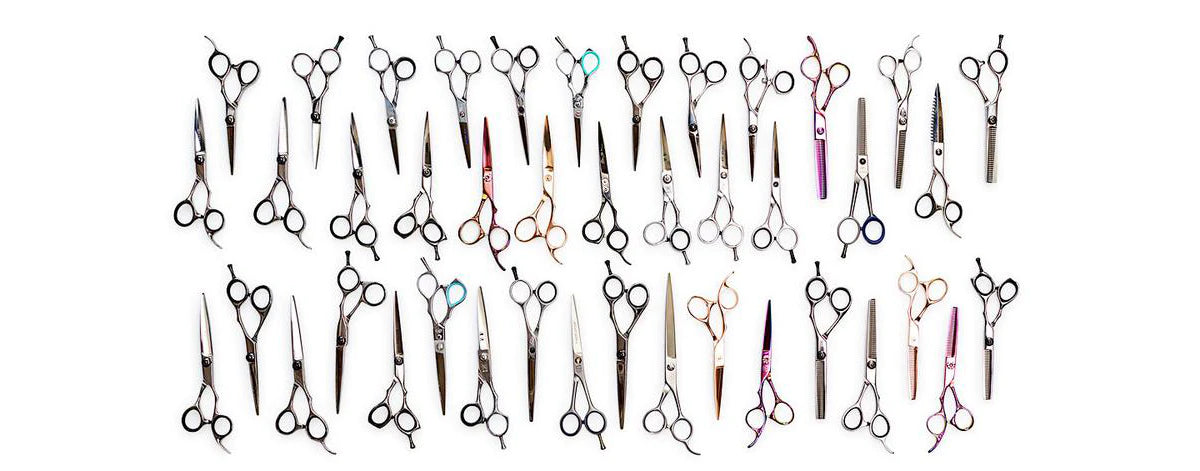Your Cart is Empty
Save 20% Storewide with the code "BUNNY20"
Save 20% Storewide with the code "BUNNY20"
Make life easier on a budget. Split your payments over a longer period. No interest as long as you meet the payments!
Make life easier on a budget. Split your payments over a longer period. No interest as long as you meet the payments!
Add description, images, menus and links to your mega menu
A column with no settings can be used as a spacer
Link to your collections, sales and even external links
Add up to five columns
Add description, images, menus and links to your mega menu
A column with no settings can be used as a spacer
Link to your collections, sales and even external links
Add up to five columns
May 12, 2017
It’s time. You know you can’t put it off any longer.
It’s time to buy a pair of scissors to take your hairdressing to the next level. But the choices are endless – and there are so many considerations! Why is this one so expensive? Why is that one so cheap when it looks the same? Should I buy a Japanese brand or a German brand? What’s the difference between offset and regular? What does a swivel thumb do? Is it true that colour is often used to cover up cheap steel?
Fear no more – we’ve come to your rescue! We’re going to answer these questions for you below.
It is impossible to tell just from looking at a photo of a pair of scissors what the quality is going to be like without picking them up, feeling them and trying them out for a while. But there are some important differences you should know about which will help you to make a more informed choice about buying scissors online. We’re experts in hairdressing scissors, and we love to make sure that the tools you buy are the very best.

There are many Japanese scissor manufacturers in the hairdressing industry. Some are well known, such as Yasaka, and some are little-known gems producing some of the best quality scissors at affordable prices. Most Japanese scissors are a great option if you are doing lots of ladies’ cuts as they are designed to have a sharper convex edge on them for slicing and chipping.
Japanese steel is considered to be the best quality scissor steel in the world.

German brand Jaguar is the longest standing scissor manufacturer in the industry with over 100 years of experience. That experience is evident in their range and reputation.
However, German scissors aren’t necessarily for everyone. They often have opposing handles, or their offset is very small and many not feel very comfortable, which is a problem if you’ll be using the scissors for years to come.
While they have the hardest steel of any other brand, they are usually designed with a very robust edge. This is great if you’re a barber and doing scissor over comb work most of the time. Some of their cheaper models, like the Jaguar Prestyle, can be a great choice of scissor for even the most experienced barber as the serrations provide plenty of grip and help to keep the scissors cutting nicely even as they eventually begin to go blunt.
If you’re working in a ladies’ salon slicing all day, Jaguar does have some scissors for you but they come at a price. For a scissor that is capable of slicing and sliding, you’ll need a pair of scissors in the Gold line range or above.
German steel is very good quality, and is the hardest steel in the industry.


It’s been said that manufacturers colour the steel to hide any imperfections, but this is far from the truth. Consider this urban myth busted! The truth is that it’s easier to make a low-quality piece of steel look nice and shiny than it is to apply a high-quality coating. On a cheap, coloured scissor the coating will look very inconsistent. Many of the Japanese factories have their scissors coated at the same factories as leading watchmakers, which leads to a very high quality and long-lasting coating on your new pair of scissors.
And of course, they look amazing!

If you are new to hairdressing, don’t let anyone sell you a pair of scissors that are not offset, but have what is called an “opposing” handle. An opposing handle is why many hairdressers today suffer from Repetitive Strain Injury (RSI), as the angle you will need to hold your finger and thumb at is entirely unnatural. Scissors with opposing handles have the finger and thumb rings directly in-line with each other. Offset handles have the thumb ring is further forward than the finger ring.
An offset scissor is ergonomically better than one with opposing handles, because your thumb more naturally closes aligned to your index finger than with your ring finger. Therefore, the further forward your thumb is in the scissor, the more natural the action and the less strain on the arm. In addition, the lower your elbow the less strain on your shoulder, potentially preventing serious injury over the long-term.
There are varying angles of offset scissors, but most Japanese manufactures tend to have very similar handle styles. German manufactured scissors tend to have less of an offset and might not feel as comfortable.
When your scissors are in your hand for many hours a day, comfort is crucial.


If you suffer from RSI or Carpal Tunnel Syndrome, you may need to check out swivel thumb scissors. The offset swivel thumb design gives you superior thumb/finger positioning that will reduce your hand fatigue, and therefore your pain and frustration. Swivel thumb scissors are consistently recommended as the best type for technicians suffering from RSI or carpal tunnel syndrome and to prevent further injury and pain.

Does it matter what scissor you choose if you are left or right handed? Yes, it does!
A right-handed scissor has the finger blade at the front when in your hand. If you put it in your left-hand the finger blade will be at the back. A left-handed scissor is a mirror image of a right-handed scissor and the finger blade will be at the front blade when it’s in your left hand.
A left-handed hairdresser using right-handed scissors has had to learn to hook their thumb and pull back on the thumb ring to push the blades together to make the scissor cut properly. This often leads to pain, fatigue, and carpal tunnel injury.



